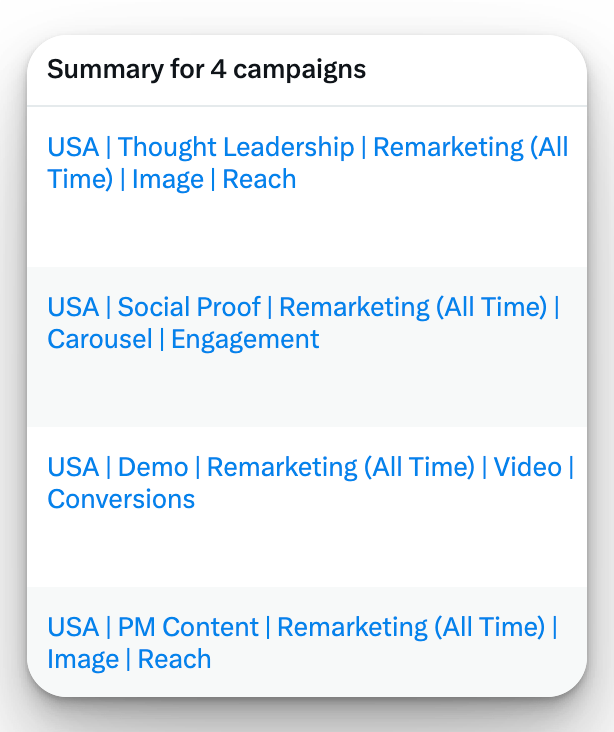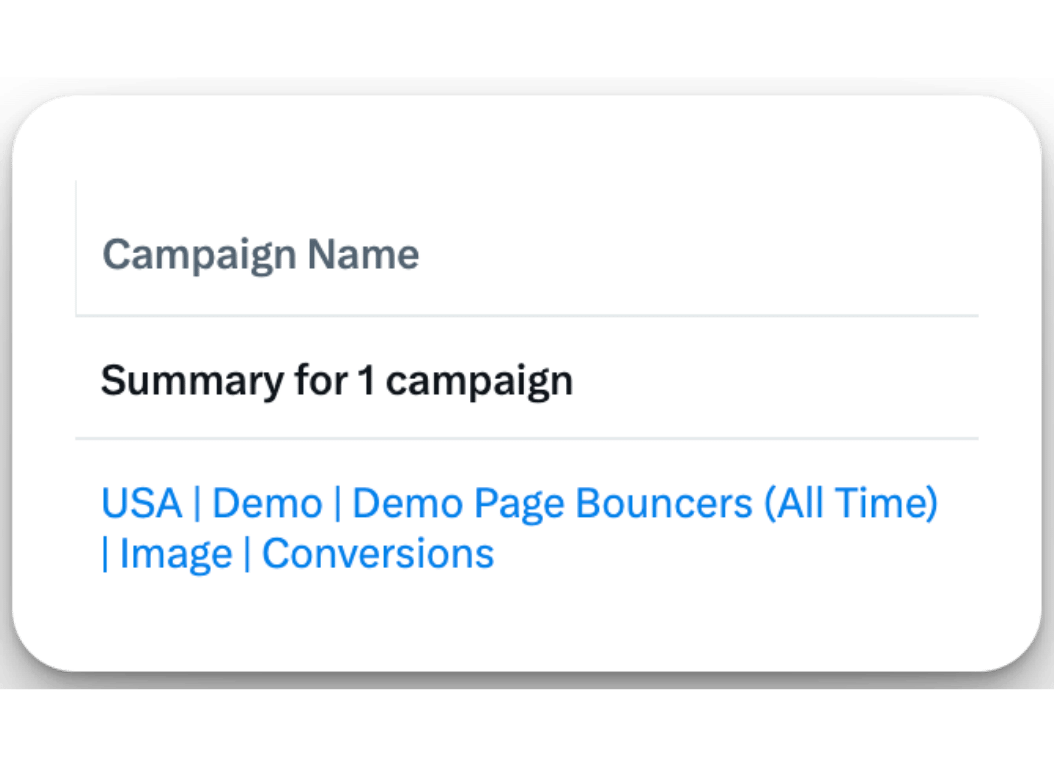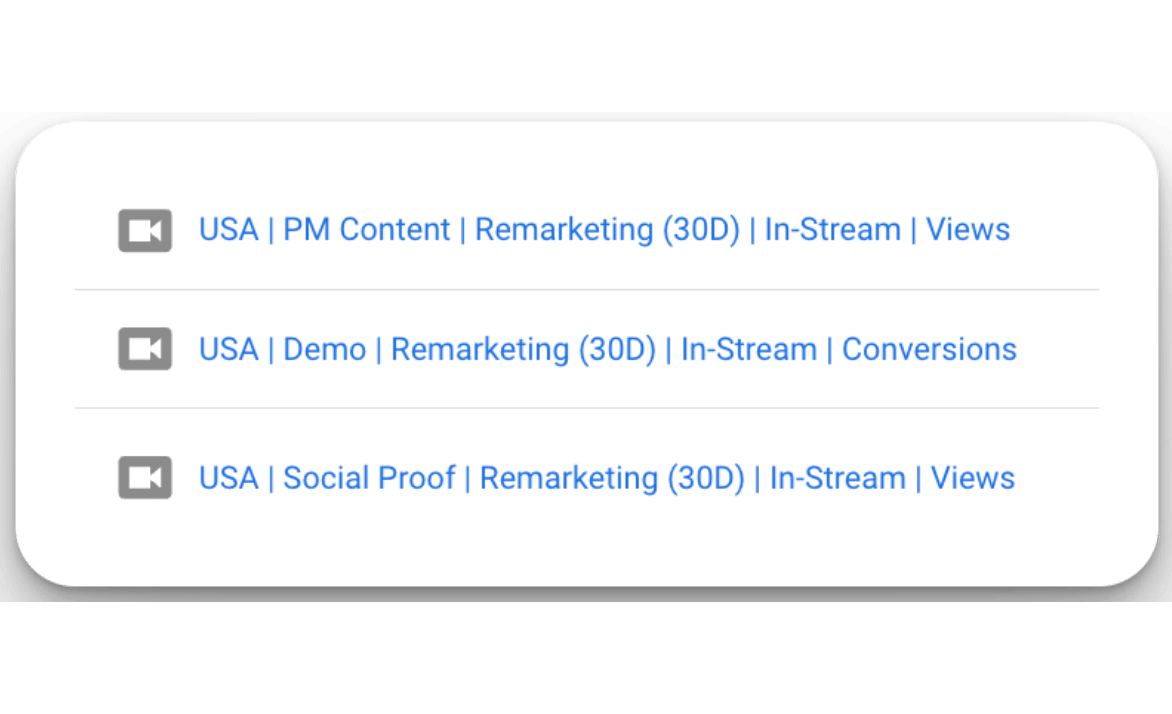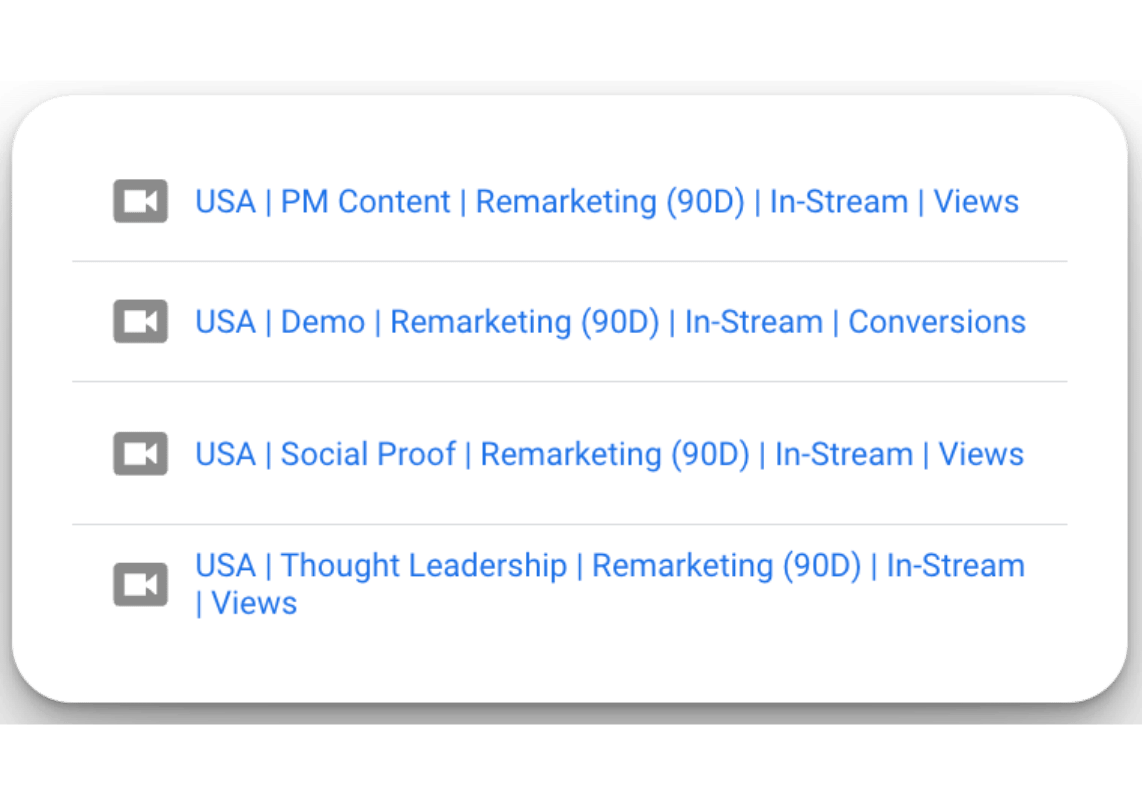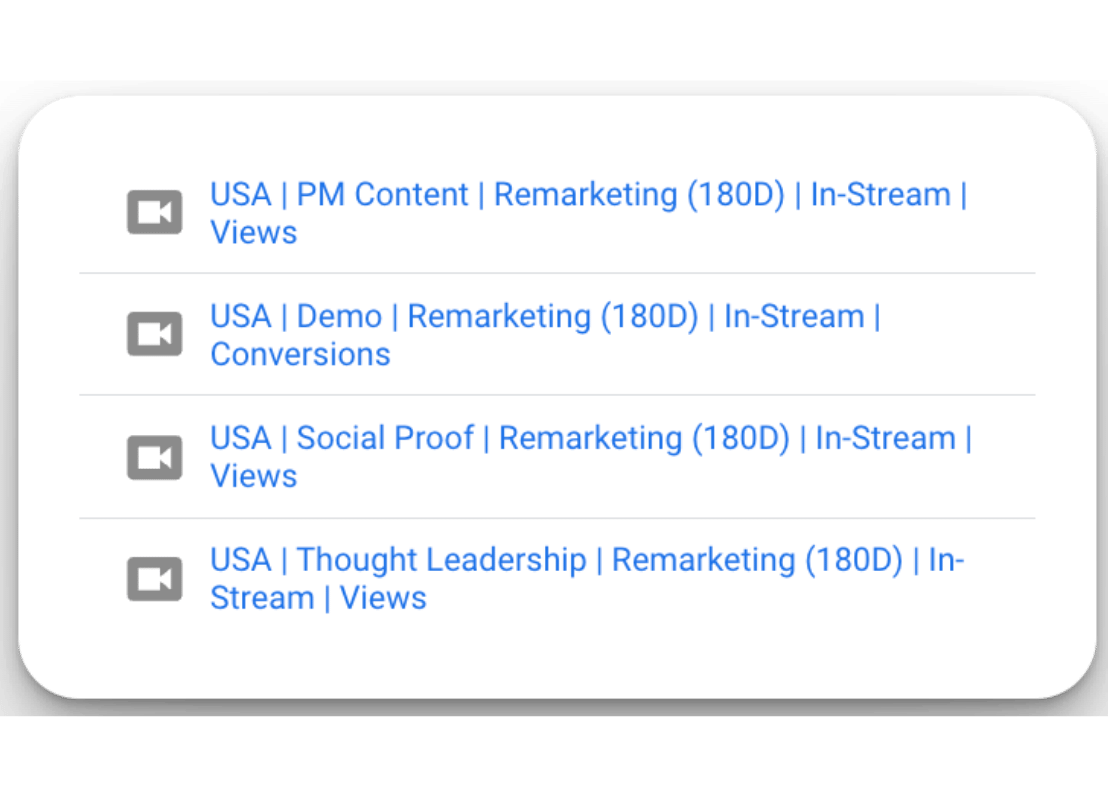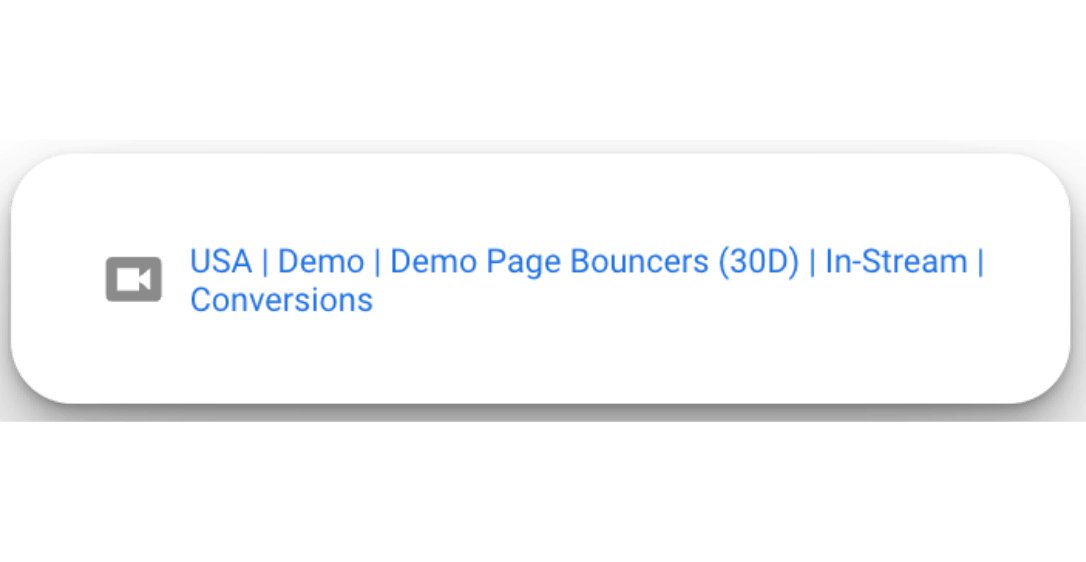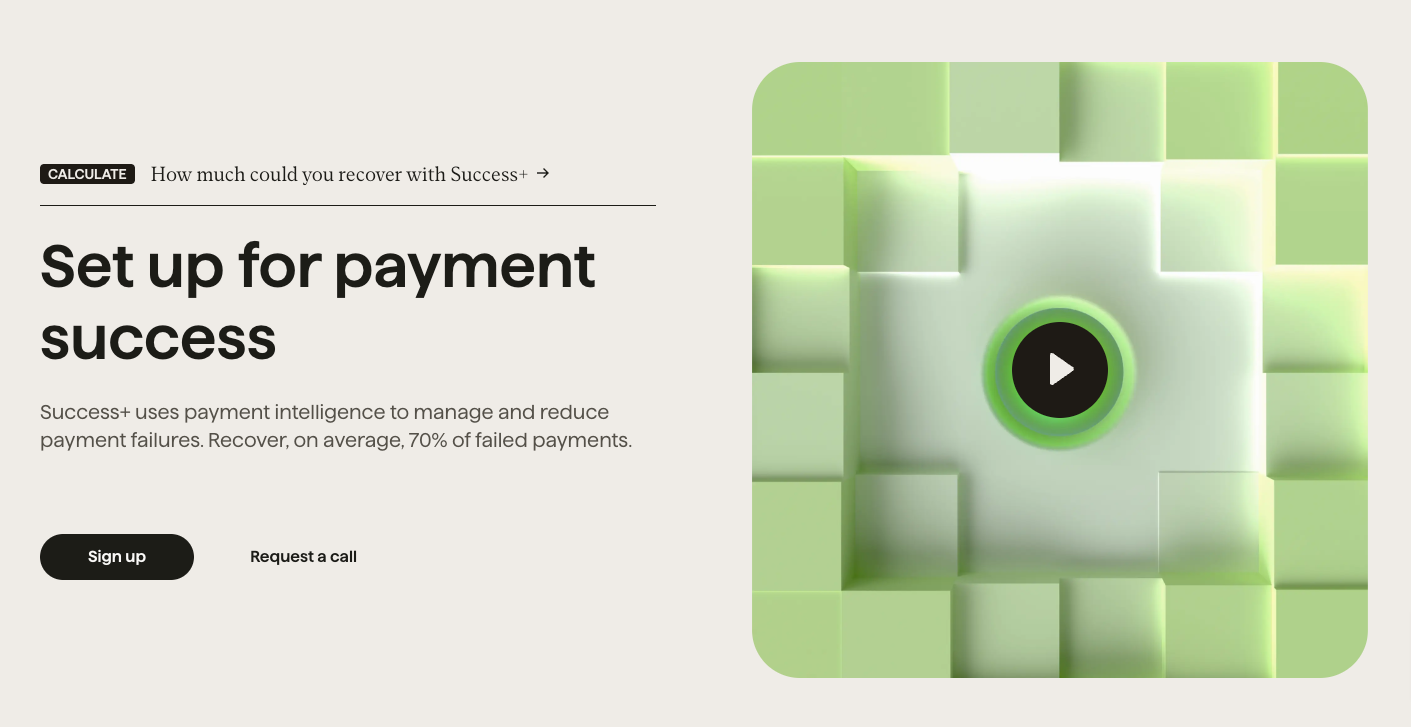
Google Ads Quality Score: Everything You Need To Know (2024)
Mastering quality score is essential if you want to pay less per click and outrank competitors.
In this article you’ll learn the 80/20 of what you need to know about quality score.
Let’s dive into it!
TABLE OF CONTENTS:
- Quality Score Simplified
- How is Quality Score Calculated?
- How to audit your Quality Score?
- How to improve your Quality Score?
- Quality Score FAQ
Quality Score Simplified
Back in 2005, Google released Quality Score.
This is a number from 1-10 that Google created to determine how relevant your ads are to what people are searching for (1 being the lowest relevance, and 10 being the highest).

Google want’s people who search to find what they are looking for.
This way they come back to Google and search again in the future.
Quality Score is how they gamified the system to achieve this objective.
It’s the perfect trinity between advertiser, searcher, and Google:
- Advertisers are rewarded with lower costs when having higher quality scores
- People searching for answers on Google will now find more relevant information
- Because people find relevant information they use Google again in the future
Before Quality Score was introduced Google was filled with tons of irrelevant ads leading to a poor experience for searchers and ultimately less people using Google in the future.
(In my opinion) Quality Score was one of the most important features released that transformed Google into the most dominant search engine in the world.
The secret to improving Quality Score is relevance.
How is Quality Score Calculated?
Ad relevance, landing page experience, and expected CTR are the three variables that go into calculating your Quality Score. Depending on how relevant each is to your keywords you’ll have a final score between 1-10 (1 being the lowest relevance, and 10 being the highest).
Ad Relevance
A metric that determines how relevant your keywords are to your ad copy.
Above average signifies great relevance, below average signifies room for improvement, below average signifies poor keyword and ad copy relevance.
Ad relevance is 100% in your control and below average ad relevance is usually the result of poor ad group structure resulting from too many keywords and/or few variations of ad copy.
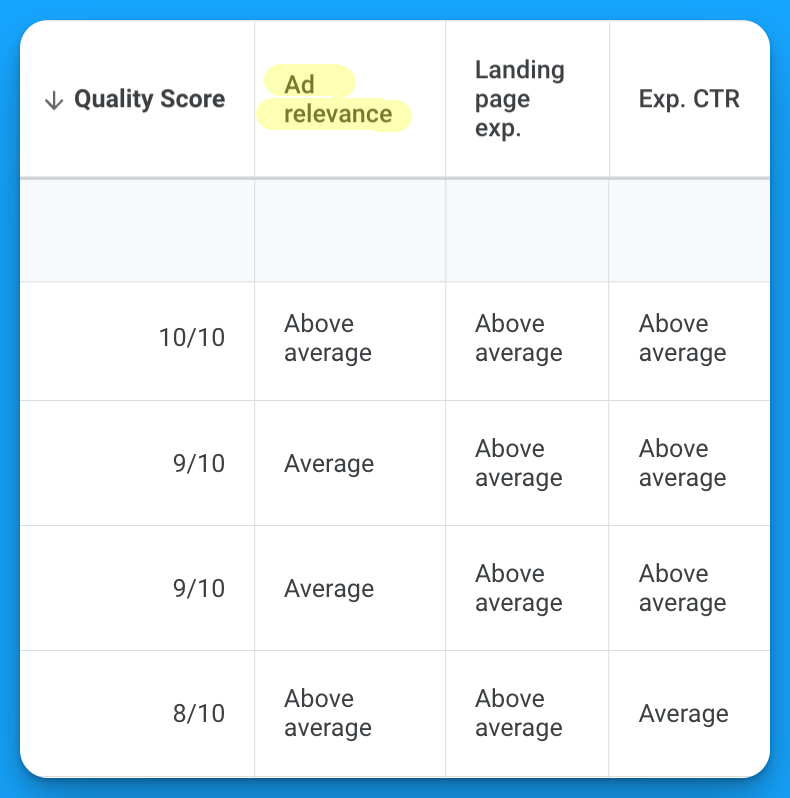
Landing Page Experience
A metric that determines how relevant your keywords, ads, and post click experience matches the search intent of the user.
It’s not just about having your keywords on the page, it also takes into consideration page load speeds, page structure (ex: H1, H2s, H3s), and mobile optimization.
Above average signifies a great landing page experience, average signifies room for improvement, and below average signifies poor post click experience.

Expected CTR
A metric that determines the likelihood of someone clicking on your ads once seen in the Google search results.
In my experience auditing Google Ads accounts this is the #1 most common variable that drags down quality score for most accounts since it’s the least in your control.
This is Google’s perception based on historical and predicted performance on how well you believe your ad will be engaged with.
Above average signifies a highly engaging ad, average signifies room for improvement, and below average signifies poor ad engagement.

How to audit your Quality Score?
Once you understand the basics of quality score that it is a factor of relevance and three components that determine whether you’re a 1-10 the next logical question becomes:
What’s impacting my quality score performance?
Here’s how to run a Google Ads quality score to find what’s impacting your performance.
[EMBED YOUTUBE VIDEO]
Step 1 - Download a keyword report
Within your Google Ads manager navigate to the keywords section within your account:
Campaigns > Keywords (press G + K for a keyboard shortcut)
Modify your keyword columns to include:
- Quality Score
- Ad Relevance
- Landing Page Experience
- Expected CTR
Once completed download your keywords into a CSV.
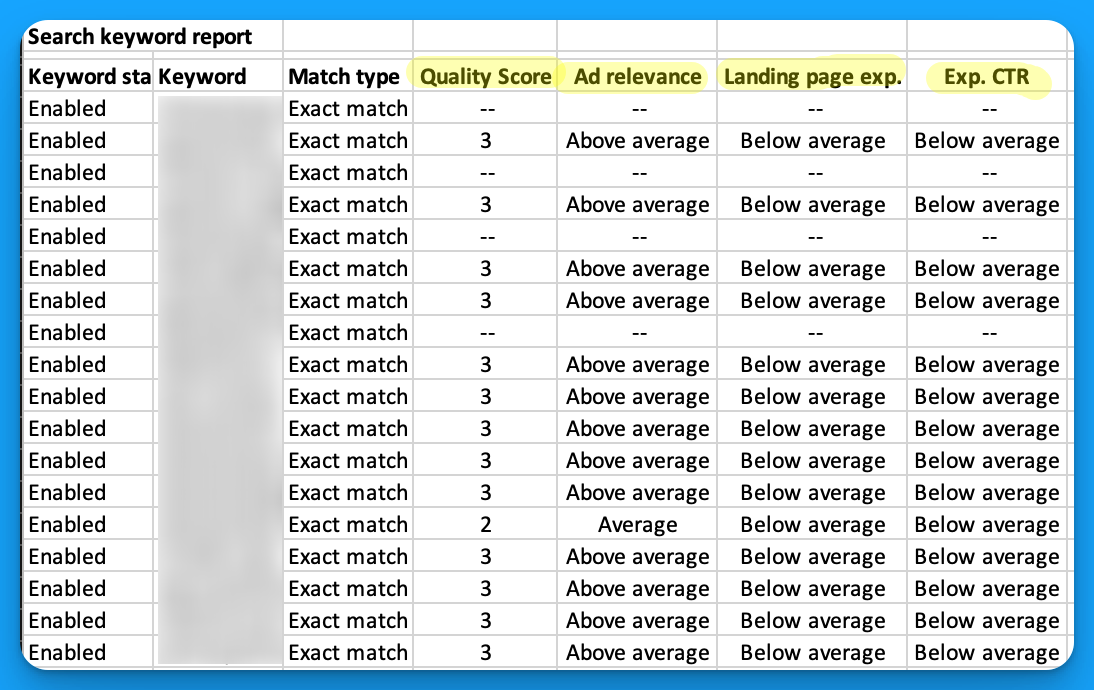
Step 2 - Summarize your keywords into a pivot table
Pivot tables are great for summarizing large amounts of data.
Within Excel navigate to Insert > PivotTable to summarize your keyword report.
Once complete format your table as follows:
- Rows = Quality Score
- Values = Count of Keywords
- Filter = Quality score 1-10 (exclude —)
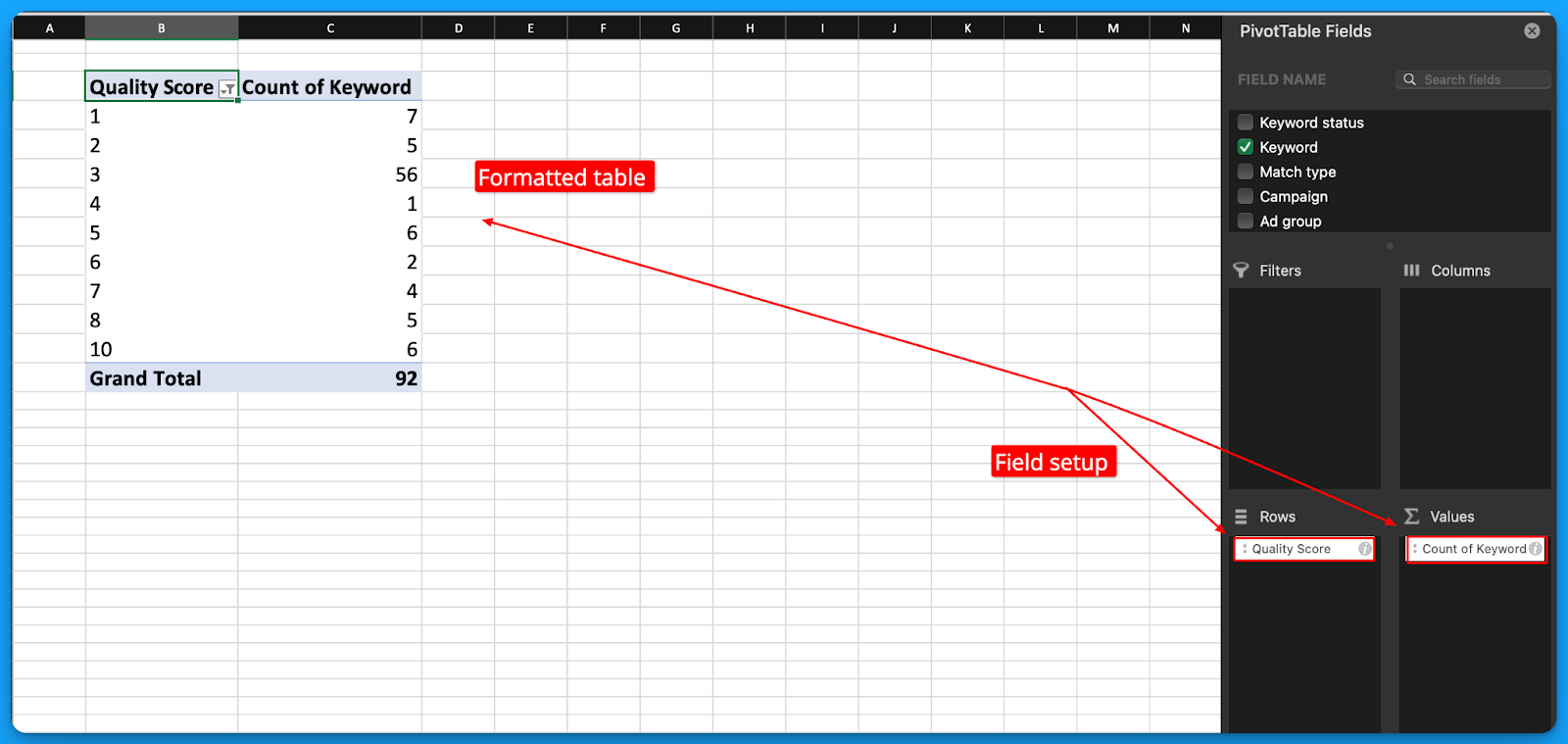
Step 3 - Drill down to understand Quality Score performance
With your table setup now you can easily see overall quality score performance and drill down into specific elements such as ad relevance, landing page experience, and expected CTR.
Switch your rows to drill down into each element of quality score to diagnose performance:
- Ad Relevance; rows = Ad Relevance, values = count of keywords
- Landing Page Experience; rows = Landing Page Experience, values = count of keywords
- Expected CTR; rows = Expected CTR, values = count of keywords

How to improve your Quality Score?
After completing your Google Ads Quality Score audit it should be pretty clear which factor of QS is hurting your performance? (ex: ad relevance, landing page experience, expected CTR).
Here’s some recommendations on how to improve each QS factor:
Improving Ad Relevance
Below average ad relevance is a symptom of poor ad group structure.
If you have below average ad relevance, fear not! Because this is 100% in your control.
Here’s some tips to improve your ad relevance:
- Add more headline variations to your responsive search ads to include the keywords within your ad groups.
- Keep your ad groups tightly grouped with thematic keywords, for the keywords that can’t fit the theme consider putting it into its own group with relevant copy.
- Consolidate your active keywords and remove below average ad relevance variations that are not receiving any worthwhile impressions or clicks.
Improving Landing Page Experience
Below average landing page experience is a symptom of poor post click experience.
If you’ve been neglecting your landing pages this is where it’s going to bite you.
Here’s some tips to improve landing page experience:
- Include your primary keyword in your headline 1 to match search intent and your ad copy.
- Run your landing page through PageSpeed Insights to find how you can improve the mobile and desktop experience.
- Follow on page SEO best practices and have proper headline, and content formatting. Remember Google will crawl your landing pages so make sure it’s technically sound.
- Install a session recording tool to see how users behave on your landing page, the insights here are invaluable at understanding gaps.
Improving Expected CTR
This is Google’s perception on how likely your ads will be clicked.
Unfortunately this aspect of Quality Score is the least in your control but that doesn’t mean there isn’t anything you can do to improve it.
Here’s some tips to improve your expected clickthrough rate:
- Use as many ad extensions as possible (ex: sitelink, image, structured snippet, etc). Ad extensions provide more info to the searcher and make your ads larger.
- Test new RSA ad copy on a monthly basis to consistently try and improve your ad clickthrough rate performance on an ongoing basis.
- Monitor your account clickthrough rate trends month over month to combat negative trends. You can set up an automated rule within Google Ads to be notified automatically via email.
- Audit your search terms report and build your negative keyword lists. Block irrelevant impressions of your ads so that you can actually drive clicks.
- Experiment with dynamic keyword insertion to see if it positively affects your ad CTR.
Quality Score FAQ
How long does it take to improve your quality score?
Technically every time your keyword enters an auction quality score is recalculated to determine placement of your ad in relation to your competitors.
However in my experience it usually takes a month to see significant changes in your overall score.
Should you worry about low quality scores?
Yes, low quality scores should cause concerns but it shouldn’t be your initial priority. The first goal should be to drive relevant traffic and convert users.
If you’re not currently accomplishing this then stressing about quality score is pointless as it’s really only a factor of reducing your costs and improving visibility.
If you’re not already converting the visibility you do have, getting more of it won’t help.
What is a good quality score?
A good quality score will fluctuate depending on your keyword strategy but overall I’d recommend having 70% of enabled keywords in your account with a score > 7.
Just know this is highly circumstantial and if you’re running a competitive keyword strategy you will have lower quality scores by default given the difficulty of including your competitors in your ads.
Hope you found this article helpful! 🔥
Check out our video tutorial linked if you want a visual walkthrough.
From Clicks to Conversions: Master Google Ads for B2B 🔥
If you want to become a Google Ads pro, check out our free B2B Google Ads courses, where you'll learn how to launch, optimize, and scale your campaigns to drive pipeline and revenue.

Here's what you'll learn in each course:
⚙️ B2B Google Ads 101 - How to Launch Dangerously Effective Campaigns for Beginners
- The Googleverse: The Game You're Playing & How To Win
- Measurement: How to Make Sure You're Profitable
- Targeting: How to Show Up For the Right Searcher
- Planning: Putting It All Together
🎯 Google Ads 102 - How to Clicks Into Profit
- Visibility: How To Find the Hole Sucking Profits
- Workflows: How to Optimize On a Daily, Weekly, Monthly & Quarterly Basis
- Experimentation: How to Test & Automate Profitability
- Troubleshooting: How To Solve Inevitable Problems
🚀 Google Ads 103 - How to Scale Google Ads For Advanced Advertisers
- Methodology: How to Vertically Scale Google Ads From A-Z
- Campaigns: Scaling Horizontally Through Campaign Themes
- Channels: Scaling Outside of Paid Search
Click Here to Join 1,000+ B2B Marketers Today and start leveling up your advertising skill set.
Takes < 90 seconds to sign up (seriously we timed it 😂)

Heading 1
Heading 2
Heading 3
Heading 4
Heading 5
Heading 6
Lorem ipsum dolor sit amet, consectetur adipiscing elit, sed do eiusmod tempor incididunt ut labore et dolore magna aliqua. Ut enim ad minim veniam, quis nostrud exercitation ullamco laboris nisi ut aliquip ex ea commodo consequat. Duis aute irure dolor in reprehenderit in voluptate velit esse cillum dolore eu fugiat nulla pariatur.
Block quote
Ordered list
- Item 1
- Item 2
- Item 3
Unordered list
- Item A
- Item B
- Item C
Bold text
Emphasis
Superscript
Subscript


Heading
Heading 1
Heading 2
Heading 3
Heading 4
Heading 5
Heading 6
Lorem ipsum dolor sit amet, consectetur adipiscing elit, sed do eiusmod tempor incididunt ut labore et dolore magna aliqua. Ut enim ad minim veniam, quis nostrud exercitation ullamco laboris nisi ut aliquip ex ea commodo consequat. Duis aute irure dolor in reprehenderit in voluptate velit esse cillum dolore eu fugiat nulla pariatur.
Block quote
Ordered list
- Item 1
- Item 2
- Item 3
Unordered list
- Item A
- Item B
- Item C
Bold text
Emphasis
Superscript
Subscript


Heading
Heading 1
Heading 2
Heading 3
Heading 4
Heading 5
Heading 6
Lorem ipsum dolor sit amet, consectetur adipiscing elit, sed do eiusmod tempor incididunt ut labore et dolore magna aliqua. Ut enim ad minim veniam, quis nostrud exercitation ullamco laboris nisi ut aliquip ex ea commodo consequat. Duis aute irure dolor in reprehenderit in voluptate velit esse cillum dolore eu fugiat nulla pariatur.
Block quote
Ordered list
- Item 1
- Item 2
- Item 3
Unordered list
- Item A
- Item B
- Item C
Bold text
Emphasis
Superscript
Subscript


Heading
Heading 1
Heading 2
Heading 3
Heading 4
Heading 5
Heading 6
Lorem ipsum dolor sit amet, consectetur adipiscing elit, sed do eiusmod tempor incididunt ut labore et dolore magna aliqua. Ut enim ad minim veniam, quis nostrud exercitation ullamco laboris nisi ut aliquip ex ea commodo consequat. Duis aute irure dolor in reprehenderit in voluptate velit esse cillum dolore eu fugiat nulla pariatur.
Block quote
Ordered list
- Item 1
- Item 2
- Item 3
Unordered list
- Item A
- Item B
- Item C
Bold text
Emphasis
Superscript
Subscript


Heading
Heading 1
Heading 2
Heading 3
Heading 4
Heading 5
Heading 6
Lorem ipsum dolor sit amet, consectetur adipiscing elit, sed do eiusmod tempor incididunt ut labore et dolore magna aliqua. Ut enim ad minim veniam, quis nostrud exercitation ullamco laboris nisi ut aliquip ex ea commodo consequat. Duis aute irure dolor in reprehenderit in voluptate velit esse cillum dolore eu fugiat nulla pariatur.
Block quote
Ordered list
- Item 1
- Item 2
- Item 3
Unordered list
- Item A
- Item B
- Item C
Bold text
Emphasis
Superscript
Subscript


Heading
Heading 1
Heading 2
Heading 3
Heading 4
Heading 5
Heading 6
Lorem ipsum dolor sit amet, consectetur adipiscing elit, sed do eiusmod tempor incididunt ut labore et dolore magna aliqua. Ut enim ad minim veniam, quis nostrud exercitation ullamco laboris nisi ut aliquip ex ea commodo consequat. Duis aute irure dolor in reprehenderit in voluptate velit esse cillum dolore eu fugiat nulla pariatur.
Block quote
Ordered list
- Item 1
- Item 2
- Item 3
Unordered list
- Item A
- Item B
- Item C
Bold text
Emphasis
Superscript
Subscript


Heading
Heading 1
Heading 2
Heading 3
Heading 4
Heading 5
Heading 6
Lorem ipsum dolor sit amet, consectetur adipiscing elit, sed do eiusmod tempor incididunt ut labore et dolore magna aliqua. Ut enim ad minim veniam, quis nostrud exercitation ullamco laboris nisi ut aliquip ex ea commodo consequat. Duis aute irure dolor in reprehenderit in voluptate velit esse cillum dolore eu fugiat nulla pariatur.
Block quote
Ordered list
- Item 1
- Item 2
- Item 3
Unordered list
- Item A
- Item B
- Item C
Bold text
Emphasis
Superscript
Subscript


Heading
Heading 1
Heading 2
Heading 3
Heading 4
Heading 5
Heading 6
Lorem ipsum dolor sit amet, consectetur adipiscing elit, sed do eiusmod tempor incididunt ut labore et dolore magna aliqua. Ut enim ad minim veniam, quis nostrud exercitation ullamco laboris nisi ut aliquip ex ea commodo consequat. Duis aute irure dolor in reprehenderit in voluptate velit esse cillum dolore eu fugiat nulla pariatur.
Block quote
Ordered list
- Item 1
- Item 2
- Item 3
Unordered list
- Item A
- Item B
- Item C
Bold text
Emphasis
Superscript
Subscript


Heading
Heading 1
Heading 2
Heading 3
Heading 4
Heading 5
Heading 6
Lorem ipsum dolor sit amet, consectetur adipiscing elit, sed do eiusmod tempor incididunt ut labore et dolore magna aliqua. Ut enim ad minim veniam, quis nostrud exercitation ullamco laboris nisi ut aliquip ex ea commodo consequat. Duis aute irure dolor in reprehenderit in voluptate velit esse cillum dolore eu fugiat nulla pariatur.
Block quote
Ordered list
- Item 1
- Item 2
- Item 3
Unordered list
- Item A
- Item B
- Item C
Bold text
Emphasis
Superscript
Subscript


Heading
Heading 1
Heading 2
Heading 3
Heading 4
Heading 5
Heading 6
Lorem ipsum dolor sit amet, consectetur adipiscing elit, sed do eiusmod tempor incididunt ut labore et dolore magna aliqua. Ut enim ad minim veniam, quis nostrud exercitation ullamco laboris nisi ut aliquip ex ea commodo consequat. Duis aute irure dolor in reprehenderit in voluptate velit esse cillum dolore eu fugiat nulla pariatur.
Block quote
Ordered list
- Item 1
- Item 2
- Item 3
Unordered list
- Item A
- Item B
- Item C
Bold text
Emphasis
Superscript
Subscript


Heading
Heading 1
Heading 2
Heading 3
Heading 4
Heading 5
Heading 6
Lorem ipsum dolor sit amet, consectetur adipiscing elit, sed do eiusmod tempor incididunt ut labore et dolore magna aliqua. Ut enim ad minim veniam, quis nostrud exercitation ullamco laboris nisi ut aliquip ex ea commodo consequat. Duis aute irure dolor in reprehenderit in voluptate velit esse cillum dolore eu fugiat nulla pariatur.
Block quote
Ordered list
- Item 1
- Item 2
- Item 3
Unordered list
- Item A
- Item B
- Item C
Bold text
Emphasis
Superscript
Subscript


Heading
Heading 1
Heading 2
Heading 3
Heading 4
Heading 5
Heading 6
Lorem ipsum dolor sit amet, consectetur adipiscing elit, sed do eiusmod tempor incididunt ut labore et dolore magna aliqua. Ut enim ad minim veniam, quis nostrud exercitation ullamco laboris nisi ut aliquip ex ea commodo consequat. Duis aute irure dolor in reprehenderit in voluptate velit esse cillum dolore eu fugiat nulla pariatur.
Block quote
Ordered list
- Item 1
- Item 2
- Item 3
Unordered list
- Item A
- Item B
- Item C
Bold text
Emphasis
Superscript
Subscript


Heading
Heading 1
Heading 2
Heading 3
Heading 4
Heading 5
Heading 6
Lorem ipsum dolor sit amet, consectetur adipiscing elit, sed do eiusmod tempor incididunt ut labore et dolore magna aliqua. Ut enim ad minim veniam, quis nostrud exercitation ullamco laboris nisi ut aliquip ex ea commodo consequat. Duis aute irure dolor in reprehenderit in voluptate velit esse cillum dolore eu fugiat nulla pariatur.
Block quote
Ordered list
- Item 1
- Item 2
- Item 3
Unordered list
- Item A
- Item B
- Item C
Bold text
Emphasis
Superscript
Subscript


Heading
Heading 1
Heading 2
Heading 3
Heading 4
Heading 5
Heading 6
Lorem ipsum dolor sit amet, consectetur adipiscing elit, sed do eiusmod tempor incididunt ut labore et dolore magna aliqua. Ut enim ad minim veniam, quis nostrud exercitation ullamco laboris nisi ut aliquip ex ea commodo consequat. Duis aute irure dolor in reprehenderit in voluptate velit esse cillum dolore eu fugiat nulla pariatur.
Block quote
Ordered list
- Item 1
- Item 2
- Item 3
Unordered list
- Item A
- Item B
- Item C
Bold text
Emphasis
Superscript
Subscript


Heading
Heading 1
Heading 2
Heading 3
Heading 4
Heading 5
Heading 6
Lorem ipsum dolor sit amet, consectetur adipiscing elit, sed do eiusmod tempor incididunt ut labore et dolore magna aliqua. Ut enim ad minim veniam, quis nostrud exercitation ullamco laboris nisi ut aliquip ex ea commodo consequat. Duis aute irure dolor in reprehenderit in voluptate velit esse cillum dolore eu fugiat nulla pariatur.
Block quote
Ordered list
- Item 1
- Item 2
- Item 3
Unordered list
- Item A
- Item B
- Item C
Bold text
Emphasis
Superscript
Subscript


Heading
Heading 1
Heading 2
Heading 3
Heading 4
Heading 5
Heading 6
Lorem ipsum dolor sit amet, consectetur adipiscing elit, sed do eiusmod tempor incididunt ut labore et dolore magna aliqua. Ut enim ad minim veniam, quis nostrud exercitation ullamco laboris nisi ut aliquip ex ea commodo consequat. Duis aute irure dolor in reprehenderit in voluptate velit esse cillum dolore eu fugiat nulla pariatur.
Block quote
Ordered list
- Item 1
- Item 2
- Item 3
Unordered list
- Item A
- Item B
- Item C
Bold text
Emphasis
Superscript
Subscript


Heading
Heading 1
Heading 2
Heading 3
Heading 4
Heading 5
Heading 6
Lorem ipsum dolor sit amet, consectetur adipiscing elit, sed do eiusmod tempor incididunt ut labore et dolore magna aliqua. Ut enim ad minim veniam, quis nostrud exercitation ullamco laboris nisi ut aliquip ex ea commodo consequat. Duis aute irure dolor in reprehenderit in voluptate velit esse cillum dolore eu fugiat nulla pariatur.
Block quote
Ordered list
- Item 1
- Item 2
- Item 3
Unordered list
- Item A
- Item B
- Item C
Bold text
Emphasis
Superscript
Subscript


Heading
Heading 1
Heading 2
Heading 3
Heading 4
Heading 5
Heading 6
Lorem ipsum dolor sit amet, consectetur adipiscing elit, sed do eiusmod tempor incididunt ut labore et dolore magna aliqua. Ut enim ad minim veniam, quis nostrud exercitation ullamco laboris nisi ut aliquip ex ea commodo consequat. Duis aute irure dolor in reprehenderit in voluptate velit esse cillum dolore eu fugiat nulla pariatur.
Block quote
Ordered list
- Item 1
- Item 2
- Item 3
Unordered list
- Item A
- Item B
- Item C
Bold text
Emphasis
Superscript
Subscript


Heading
Heading 1
Heading 2
Heading 3
Heading 4
Heading 5
Heading 6
Lorem ipsum dolor sit amet, consectetur adipiscing elit, sed do eiusmod tempor incididunt ut labore et dolore magna aliqua. Ut enim ad minim veniam, quis nostrud exercitation ullamco laboris nisi ut aliquip ex ea commodo consequat. Duis aute irure dolor in reprehenderit in voluptate velit esse cillum dolore eu fugiat nulla pariatur.
Block quote
Ordered list
- Item 1
- Item 2
- Item 3
Unordered list
- Item A
- Item B
- Item C
Bold text
Emphasis
Superscript
Subscript


Heading
Heading 1
Heading 2
Heading 3
Heading 4
Heading 5
Heading 6
Lorem ipsum dolor sit amet, consectetur adipiscing elit, sed do eiusmod tempor incididunt ut labore et dolore magna aliqua. Ut enim ad minim veniam, quis nostrud exercitation ullamco laboris nisi ut aliquip ex ea commodo consequat. Duis aute irure dolor in reprehenderit in voluptate velit esse cillum dolore eu fugiat nulla pariatur.
Block quote
Ordered list
- Item 1
- Item 2
- Item 3
Unordered list
- Item A
- Item B
- Item C
Bold text
Emphasis
Superscript
Subscript


Heading
Other Articles You May Enjoy.

B2B Advertising in 2024: The Definitive Guide
Today I’m going to give you a crash course in B2B advertising.
In this comprehensive guide I’ll cover:
- What is B2B advertising?
- 7 ways B2B differs from B2C
- 20 B2B Terms and Metrics you need to know
- Top 3 B2B Revenue Models
- B2B ad examples by revenue model
- How to create a B2B advertising strategy
- The Five Stages Model
- The Best B2B Ad Channels
- Advice from 20 B2B Advertising Experts
So if you need to get up-to-speed on B2B as quickly as possible, you’ll love this guide.
Let’s get started 🔥
What Is Business-to-Business Advertising?
B2B advertising is the process of any paid marketing efforts directed toward influencing multiple individuals within a company for a purchase decision (known as a buying committee) vs a single consumer.
7 Differences between B2B and B2C Advertising:
- Longer sales cycles (3 - 36 months)
- Larger average deal sizes (< $1,000 - $250,000+)
- More stakeholders involved in the purchase decision (ex: c-suite, finance)
- Focus on impacting the entire buyer's journey not just the first conversion (unlike B2C).
- Smaller audiences (< 300,000) with a focus on reaching the right person and company vs B2C with broad audiences ( > 300,000) as more people can purchase your product.
- B2B requires strategic alignment between marketing and sales as you’re joining forces (inbound and outbound) to win accounts.
- B2B supports multiple revenue models, the big three being; product-led, sales-led, and hybrid. Whereas e-commerce is solely product-led.
Check out more examples in the article: B2B vs B2C Advertising: 8 Differences & Examples You Need To Know.
20 B2B Terms and Metrics you Need to Know
One of the first things you realize when you get into B2B is how much jargon there is! MQL, SQL, ACV, ARR, and the list goes on!
In order to make sure you understand the language, here’s 20 B2B terms and metrics you need to know:
Unfortunately there are many more terms you’ll need throughout your B2B career 😂 and every company creates their own (it’s a constant struggle) but these 20 will give you a solid foundation. For a great list of b2b terms check out our B2B Advertising Glossary.
Top 3 B2B Revenue Models
If you’re working in B2B there are three common revenue models you’ll likely work with.
If your job is to promote this organization, understanding the revenue model is key as it will change everything from how you approach your strategy, the offers you choose, channels, and more.

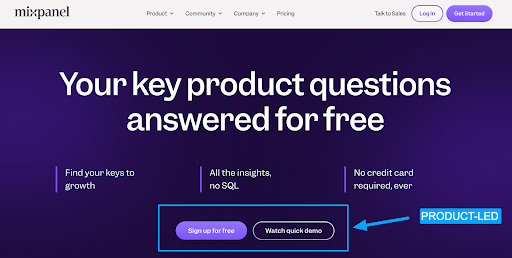

B2B Ad Examples by Revenue Model:
Sales Led
Product Led
How to build a full-funnel B2B Advertising Strategy
Now that you know how B2B differs from B2C.
How do you build a full-funnel B2B advertising strategy?
Full-funnel refers to building a strategy that covers all touch points along the customer journey.
This means advertising to individuals who are (e.g. Eugene's Schwartz Stages of Awareness):
- Unaware = have no clue they even have a problem in the first place (ex: blissfully mismanaging customer relationships)
- Problem Aware = know they have a problem but are not sure how to solve it (ex: realize managing customer relationships is important but don't know how).
- Solution Aware = need help deciding on the right solution (ex: should I use Google Sheets, a filing cabinet 😂 or a CRM?).
- Product Aware = know of your brand/product but not sure if you're the best option (ex: comparing CRM software; Salesforce vs HubSpot vs Pipedrive).
- Offer Aware = know of your brand and exactly how you can help but need some nudging (ex: pricing discounts, better contract terms, customer references).
- Most Aware = Existing customers, familiar with your brand and working with you (ex: referral program).
Understanding your prospects' stage of awareness allows you to create messaging, and offers that better resonate with where they are in the customer journey.
It helps to have a model (think of it like a map) to make complicated topics simple.
We’re going to use The Five Stages model covered in our course Building a Paid Media Program.
Here’s how it works:
Based on the stage; the outcome, awareness level, offers, tactics, and KPIs differ.
- Outcome = the end goal you're trying to achieve in each stage.
- Awareness = the familiarity level of your brand/product/solution.
- Offers = what you're providing your target audience in each stage.
- Tactics = how you're going to actually execute your strategy per stage.
- KPIs = how you're going to measure success in each stage.
Let's dive into examples for each stage so you really understand!
The Five Stages Model
Stage 1: Create
Stage 2: Capture
Stage 3: Accelerate (Sales Led) / Activate (Product Led)
Stage 4: Revive
Stage 5: Expand
The Five Stages model allows you to plan across all the lifecycle stages past initial conversion.
Ultimately no one knows for certain where someone is in their buyer's journey and everyone moves through it at different speeds. Use your best judgment.
If you're confused on which stage someone would be, remember the target audience's level of awareness dictates the stage they fall under.
Which stage should you invest in?
Generally speaking if you want to maximize ROI in the short-term you should work from the bottom of the Five Stages and move towards the top (Expand → Create).
You don't have to build a full-funnel strategy at once, take it one stage at a time.
Putting The Five Stages into practice
- Decide on which stage you want to focus on based on the outcome you’re after. If you have a smaller budget (ex: < $5,000/month) focus exclusively on one stage first.
- Once you’ve decided on the stage fill in your budget, and leading + lagging KPIs. If you’re unsure of what KPIs to select refer to Module 5- Lesson 1 of Building a Paid Media Program.
- Next decide on which channels you’ll advertise on to reach individuals in this stage and how you’ll target them and exclude the wrong audience. If you’re unsure of what channels to advertise on, refer to Choosing the BEST channels.
- Finally decide on what offers you’re going to promote in these channels for this stage (the offers listed above are only examples to give you ideas).
- If you’re targeting multiple stages repeat steps 1-4 for each.
Click here to become an AdConversion student and get free access to The Five Stages planning template in Module 2 - Lesson 1 where we cover how to build your paid media strategy in depth.

After you’ve filled in The Five Stages planning template you now have your strategy in place and can easily move into execution and start assembling your campaigns, creatives, and messaging.
What are the BEST B2B advertising channels?
The obvious answer is where your audience hangs out online!
But not all channels are equal, some are more effective at certain stages.
Most channels can be grouped into these 5 primary categories ↓
How to decide on the best channel?
There's four key criteria to consider when deciding on a channel:
- Targeting options
- Media cost
- Reach
- Policy
Let's dive into each ↓
If the channel you’re considering meets all four of these criteria then you should consider running a test campaign for $100 to get your real average CPC & CPM.
Recommended Channels by Stage
Based on my experience these channels work best for each stage:
(Use this as inspiration not restriction)
Let this be a guide to help you get started, take what serves you and abandon the rest.
Test what works for you until proven otherwise.
Advice from 20 B2B advertising experts
One of the best parts about being in B2B is the quality of marketers in this space.
We asked 20 B2B advertising experts:
What’s 1 tip you’d share with new marketers getting into B2B advertising?

50+ Ad Specs for The Top 10 Ad Platforms
Have you ever wondered what dimensions does that ad require? 🤔
Then started searching to find the answer? (same here lol)
To save you (and ourselves) trouble, we gathered the most popular ad specs across 10 channels in one place:
- Google Display Ad Specs
- LinkedIn Ad Specs
- Twitter (X) Ad Specs
- Quora Ad Specs
- Reddit Ad Specs
- YouTube Ad Specs
- Google Discovery / Demand Gen Ad Specs
- TikTok Ad Specs
- Meta Ad Specs
⭐️ Bookmark this article and refer back to it when you need ad specs.
Google Display Ad Specs
Source: support.google.com
Browse examples at adstransparency.google.com
LinkedIn Ad Specs
Source: business.linkedin.com
Browse examples at: linkedin.com/ad-library/home
X (Twitter) Ad Specs
Source: business.twitter.com
- You can request to have video lengths increased up to 10 minutes
- Carousel can use images or videos but must be in the same aspect ratio (ex: 1:1 or 16:9)
Quora Ad Specs
Source: image ads, video ads
Reddit Ad Specs
Source: reddit.my.site.com
* Headlines will be truncated to 100 characters on mobile/mobile web for the conversation placement.
Youtube Ad Specs
Source: support.google.com
Browse examples at adstransparency.google.com
Google Discovery / Demand Gen Ad Specs
Source: support.google.com
Browse examples at adstransparency.google.com
TikTok Ad Specs
Source: ads.tiktok.com
Browse examples at library.tiktok.com/ads
Meta Ad Specs (Facebook/Instagram)
Source: business.facebook.com
Browse examples at: www.facebook.com/ads/library
Resources for Mastering B2B Advertising
Hope you found this ad specs article useful!
If you’re serious about mastering B2B advertising then you definitely need to join 1,000+ B2B marketers leveling up their paid advertising skill sets in AdConversion.
Here’s 4 reasons why you should consider joining. Every one of our on-demand courses are:
✅ 100% free access.
✅ Taught by vetted industry experts.
✅ Have workbooks, resources, and templates.
✅ Less than 10 minutes per lesson.
We believe every marketer should know how to scale paid ads so they can:
• Scale their ideas
• Level up their careers
• Make a positive impact
Click Here to Join 1,000+ B2B Marketers Today and start leveling up your advertising skill set.
Takes < 90 seconds to sign up (seriously I timed it 😂)
People Also Ask
How often do ad platforms update their ad specifications, and how can I stay informed about these changes?
Ad platforms periodically update their ad specs to accommodate new features or policies. To stay informed, regularly check the official guidelines of each platform and subscribe to their newsletters or blogs for updates.
What are the common pitfalls to avoid when designing ads to meet platform specifications?
Common pitfalls include using incorrect dimensions, exceeding file size limits, and neglecting safe zones, which can lead to ad disapproval or poor display. Always adhere to the latest specifications and test your ads across devices.
How can I ensure that my ad creatives are optimized for both desktop and mobile viewing?
Design responsive ads that adapt to various screen sizes. Utilize platform-specific preview tools to see how your ads render on different devices, ensuring readability and visual appeal across all formats.
Are there tools available to streamline the creation of ad creatives that comply with multiple platform specifications?
Yes, tools like Canva, Adobe Creative Cloud, and Figma offer templates tailored to various platform specs, simplifying the design process and ensuring compliance.
How do ad specifications impact the performance and effectiveness of my advertising campaigns?
Adhering to specifications ensures that your ads display correctly, preventing issues like cropping or distortion. Properly formatted ads enhance user experience, leading to better engagement and higher conversion rates.

3 Powerful Strategies For Scaling SaaS Google Ads You Need To Know
Google Ads is a blessing and a curse.
You're blessed with intent and cursed with scale.
It’s a powerful channel for scaling pipeline for SaaS startups but low search volume is a challenge.
In this article you’re going to learn 3 powerful strategies for scaling your SaaS google ads further.
This won’t solve your limited search volume issues that's just the nature of your target keywords and B2B SaaS but these strategies will help you squeeze more performance from your account.
Let’s dive into it 👇
TABLE OF CONTENTS
- Strategy #1: Broad Match Discovery
- Strategy #2: Advertising outside of English
- Strategy #3: Industry campaigns
Strategy #1: Broad Match Discovery
Before you click away I’m not talking about using broad match in the traditional sense.
Where you let Google show your ads for WHATEVER they think is relevant.
Broad match discovery is where you combine broad match keywords AND an audience.
It essentially means you’re giving Google the flexibility to show your ads for whatever they feel is relevant but within the confines of your targeted audience.
I would not recommend testing this approach unless you have:
- Strong negative keyword lists
- Proven converting phrase match keywords
- Significant conversion volume (> 15/month)
The benefit is you get to scale your top keywords safely past phrase match.
How to implement broad match discovery:
Step 1: Find proven converting phrase match keywords
Review your performance across converting phrase match keywords to identify which you’re going to prioritize testing with broad match discovery.
Don’t rely on “total conversions” make sure you’re viewing performance by keyword based on the custom metrics that matter for your business (ex: Demo, Trial, SQL, SAL, Opp, etc).
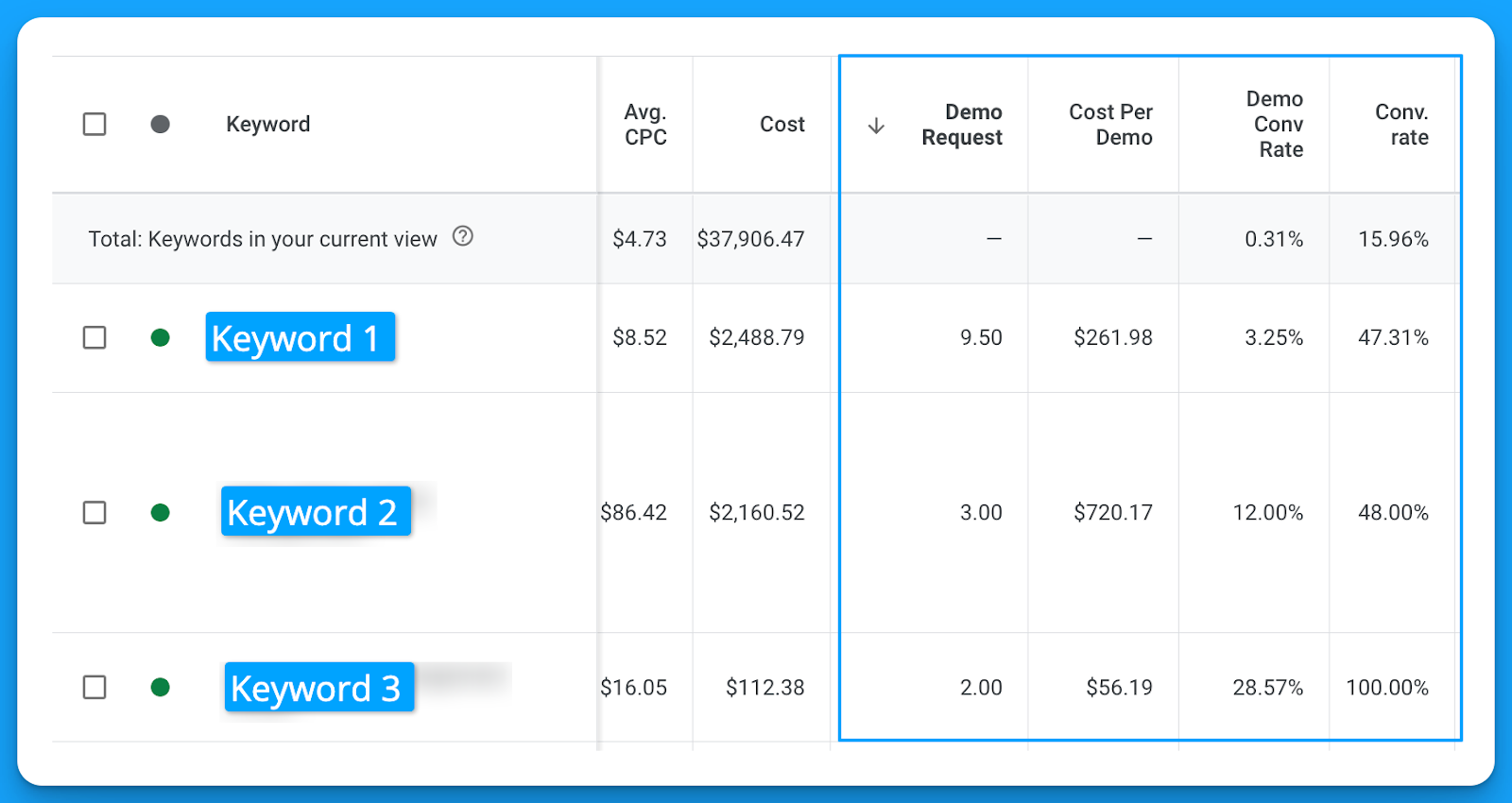
Once you’ve identified some worthwhile keywords it’s time for step 2.
Step 2: Brainstorm your targeted audiences
Google has 5 audience types you can leverage for targeting in your search campaigns.
- Your data = website visitors or contact lists
- In-market = people actively researching a given topic
- Life events = people who’ve accomplished a life milestone (ex: create a business, get married)
- Detailed demographics = industries, company sizes, education level.
- Affinity = people who are interested in a certain topic

You can use a mixture of all these different types of audiences to layer on top of your broad match discovery campaigns.
If you’re dealing with < 500 searches/month for your keywords I recommend clustering a minim of 10-15 audiences on top of your campaigns to help with delivery.
Step 3: Setup a campaign experiment
The safest way you can test broad match discovery is in a 50/50 experiment alongside your top converting phrase match campaign.
You can easily AB test in Google Ads using the campaign experiments feature.
Located under Campaigns > Experiments
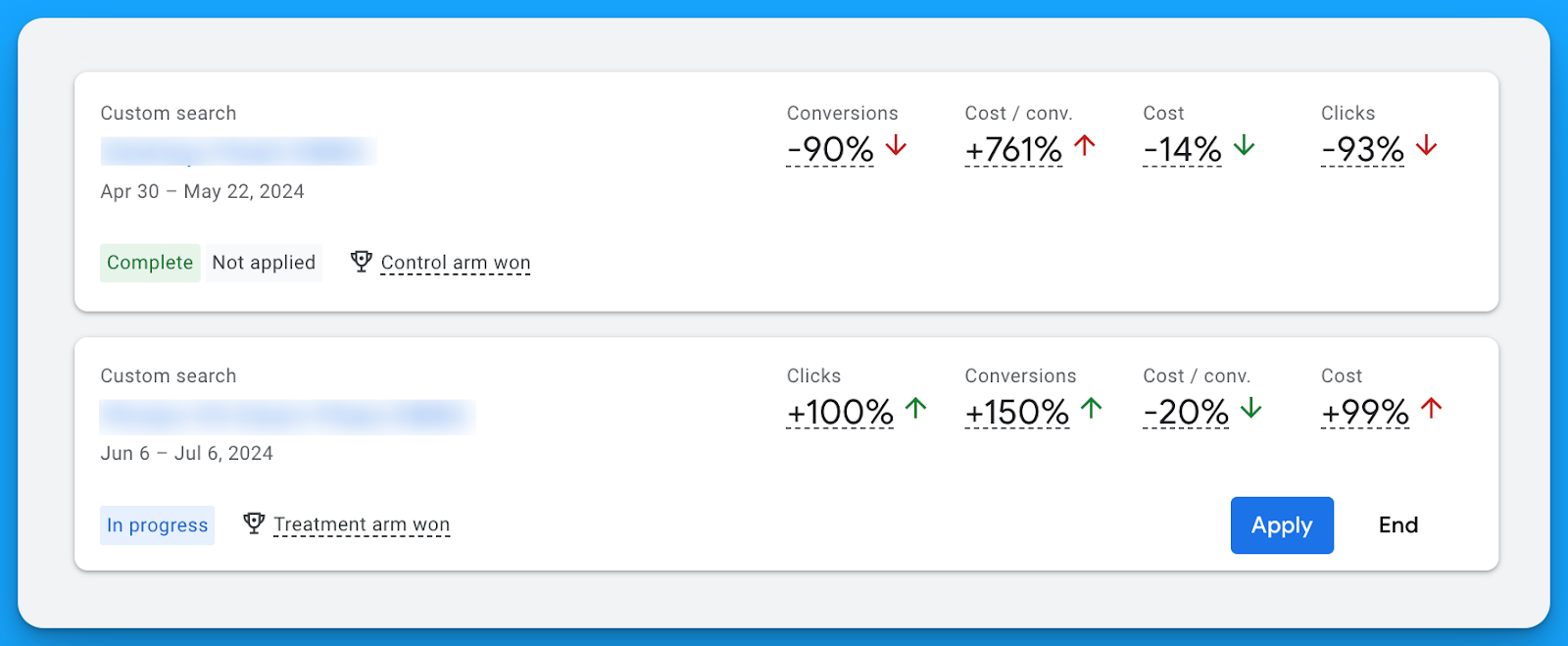
Using this feature build an experiment splitting the traffic by 50% for your original campaign vs the experiment version using broad match AND the targeted audiences you brainstormed in step 2.
Strategy #2: Advertising outside of English
English is the most competitive language in the world with the majority of advertisers.
We’ve seen reductions of up to 70% in our average CPC targeting other languages.
If your company has the resources to sell in multiple languages – take advantage of localization!
Localization campaigns are when you target keywords, write ad copy, and design landing pages that all are in your audience's native language (ex: Spanish, German, Portuguese).
You’ll reap the benefits of lower costs due to less competition.
The downside however with localization is search volume.
If you’re already advertising in English outside of North America and finding success, definitely recommend testing this strategy.
How to implement localized campaigns:
Step 1: Find proven converting phrase match keywords
Review your performance across converting phrase match keywords to identify which you’re going to prioritize testing with broad match discovery.
Don’t rely on “total conversions” make sure you’re viewing performance by keyword based on the custom metrics that matter for your business (ex: Demo, Trial, SQL, SAL, Opp, etc).

Step 2: Brainstorm your targeted languages
Ask your internal team what languages your sales team is able to sell in.
Based on your options make a list of potential languages.
Next, if you’re advertising outside of North America, review the top performing countries and identify their local languages and see if you have the internal resources that can speak that language.
If you can’t sell in this language then this strategy won’t make sense.
Step 3: Hire a local translator
Don’t make the mistake of relying on Google Translate to perform the bulk of your translation.
You’ll want to hire a translator that grew up in the area in which you want to advertise.
For instance, if you’re advertising in Portuguese.
The dialect for Europeans living in Portugal and those living in Brazil is very different.
A local Brazilian can tell if it’s not their dialect just like a native Portuguese.
I recommend hiring locals off Upwork can be as low as $12/hour depending on the language.
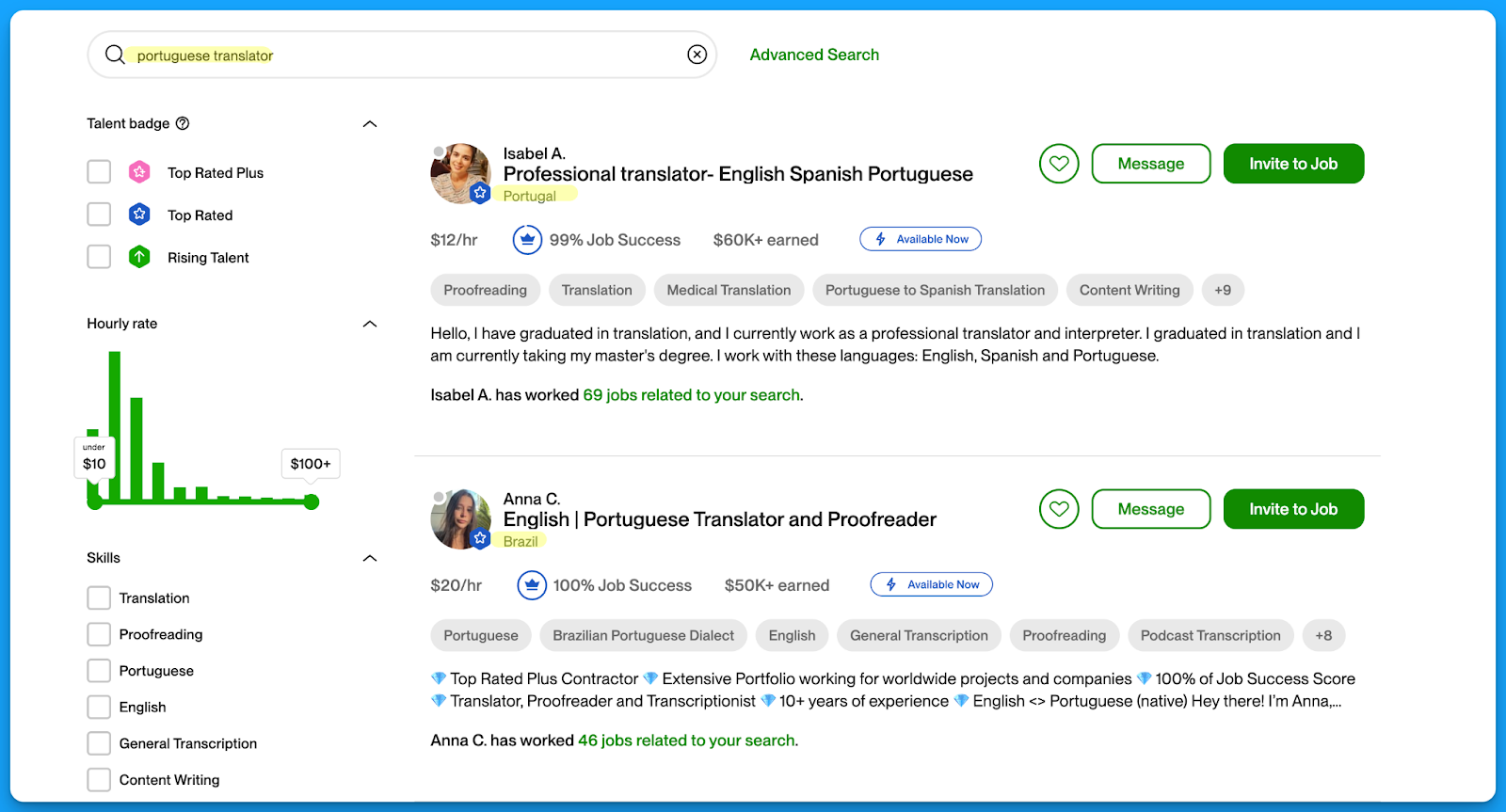
These translations will make a world difference in your ad and landing page copy.
Strategy #3: Industry campaigns
Industry campaigns can be great for coverage and quality.
This is where you’re going to bid on a desired keyword and add a related industry term.
For example, let’s say bidding on the keyword “crm software” here’s how you can modify this keyword to make it industry specific:
- healthcare crm software
- crm software for fintech
- crm software for small businesses
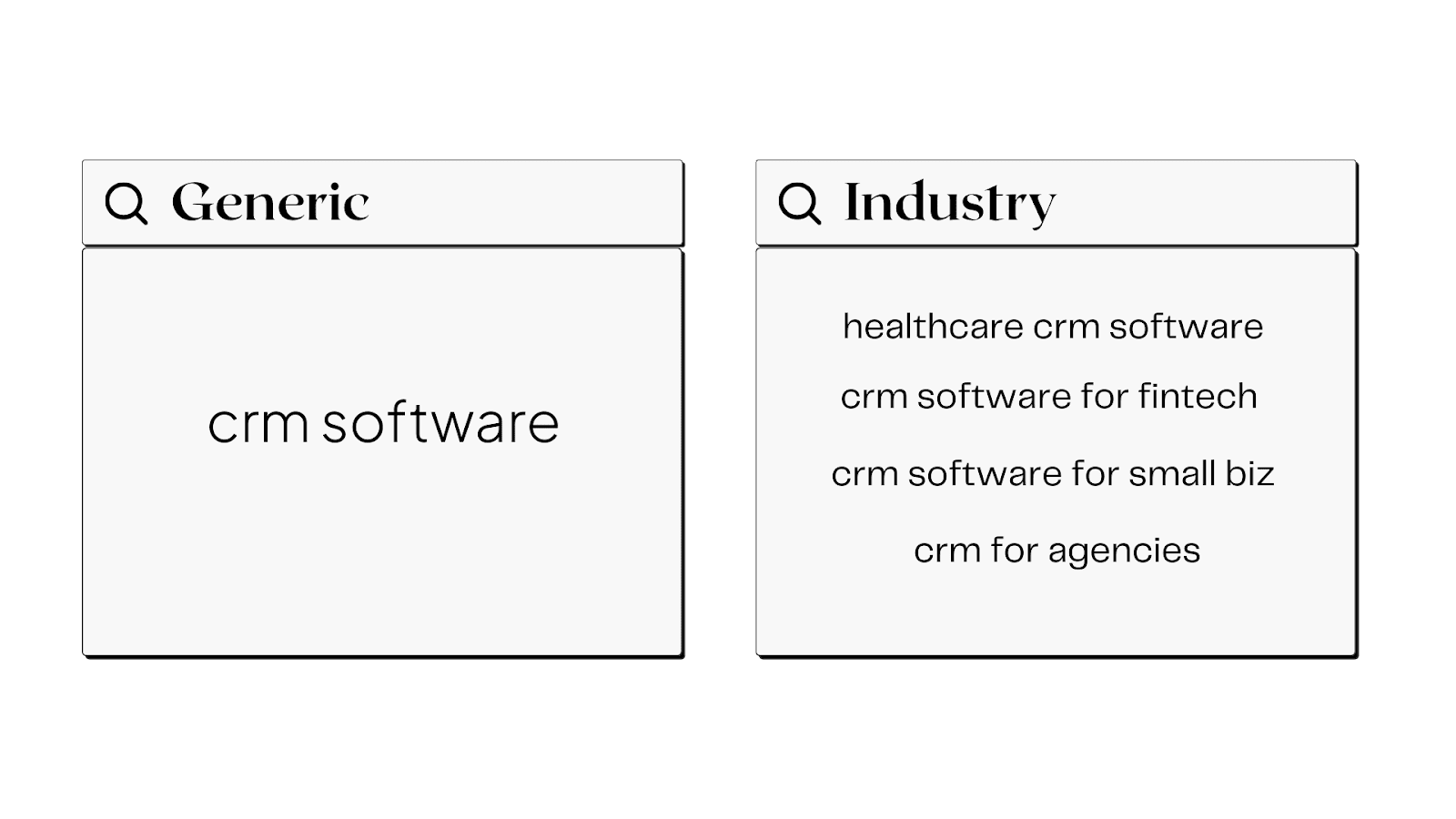
The benefits of industry campaigns:
- Personalized ad copy that can yield greater CTRs
- Higher quality leads due to a more qualified search term
- Lower cost per click prices due to less competition
The downside however is search volume (the constant struggle of Google for SaaS 😅).
How to implement industry campaigns:
Step 1: Find proven converting phrase match keywords
Just like the other strategies we’re going to identify proven keywords first that we can create industry variations for.
Step 2: Brainstorm your target industries
Run a win rate analysis in your CRM and understand which industries have the shortest sales cycles and largest deal sizes? Based on your findings, prioritise the industries in which you want to target.
Step 3: Build and prevent keyword overlap
Once you have your keywords and target industries you’re ready to build your campaigns.
Make sure to add your industry terms as negative keywords in your generic non-brand campaigns.
Otherwise you can have people seeing your generic ads for your industry terms.
Hope you found this article helpful!
Best of luck scaling your Google Ads campaigns for your SaaS.
From Clicks to Conversions: Master Google Ads for B2B 🔥
If you want to become a Google Ads pro, check out our free B2B Google Ads courses, where you'll learn how to launch, optimize, and scale your campaigns to drive pipeline and revenue.

Here's what you'll learn in each course:
⚙️ B2B Google Ads 101 - How to Launch Dangerously Effective Campaigns for Beginners
- The Googleverse: The Game You're Playing & How To Win
- Measurement: How to Make Sure You're Profitable
- Targeting: How to Show Up For the Right Searcher
- Planning: Putting It All Together
🎯 Google Ads 102 - How to Clicks Into Profit
- Visibility: How To Find the Hole Sucking Profits
- Workflows: How to Optimize On a Daily, Weekly, Monthly & Quarterly Basis
- Experimentation: How to Test & Automate Profitability
- Troubleshooting: How To Solve Inevitable Problems
🚀 Google Ads 103 - How to Scale Google Ads For Advanced Advertisers
- Methodology: How to Vertically Scale Google Ads From A-Z
- Campaigns: Scaling Horizontally Through Campaign Themes
- Channels: Scaling Outside of Paid Search
Click Here to Join 1,000+ B2B Marketers Today and start leveling up your advertising skill set.
Takes < 90 seconds to sign up (seriously we timed it 😂)
People Also Ask
How can I effectively measure the success of my Google Ads campaigns for SaaS products?
Utilize key performance indicators (KPIs) such as conversion rates, cost per acquisition (CPA), and return on ad spend (ROAS). Implement tracking tools like Google Analytics to monitor user behavior and campaign performance.
What are the best practices for creating compelling ad copy that resonates with my target audience?
Focus on highlighting unique selling propositions (USPs), addressing customer pain points, and including clear calls-to-action (CTAs). A/B testing different ad variations can help determine what resonates most with your audience.
How can I optimize my landing pages to improve conversion rates from Google Ads traffic?
Ensure landing pages are relevant to the ad content, load quickly, and have a clear, concise design. Incorporate strong CTAs and minimize distractions to guide users toward the desired action.
What role does keyword research play in the success of Google Ads for SaaS, and how should I approach it?
Keyword research is crucial for targeting the right audience. Use tools like Google Keyword Planner to identify high-intent keywords relevant to your SaaS product, and consider long-tail keywords to capture more specific search queries.



%20-%20new%20v2.png)









































%2520(1).jpeg)
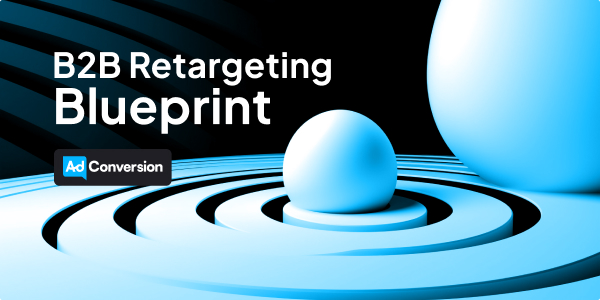
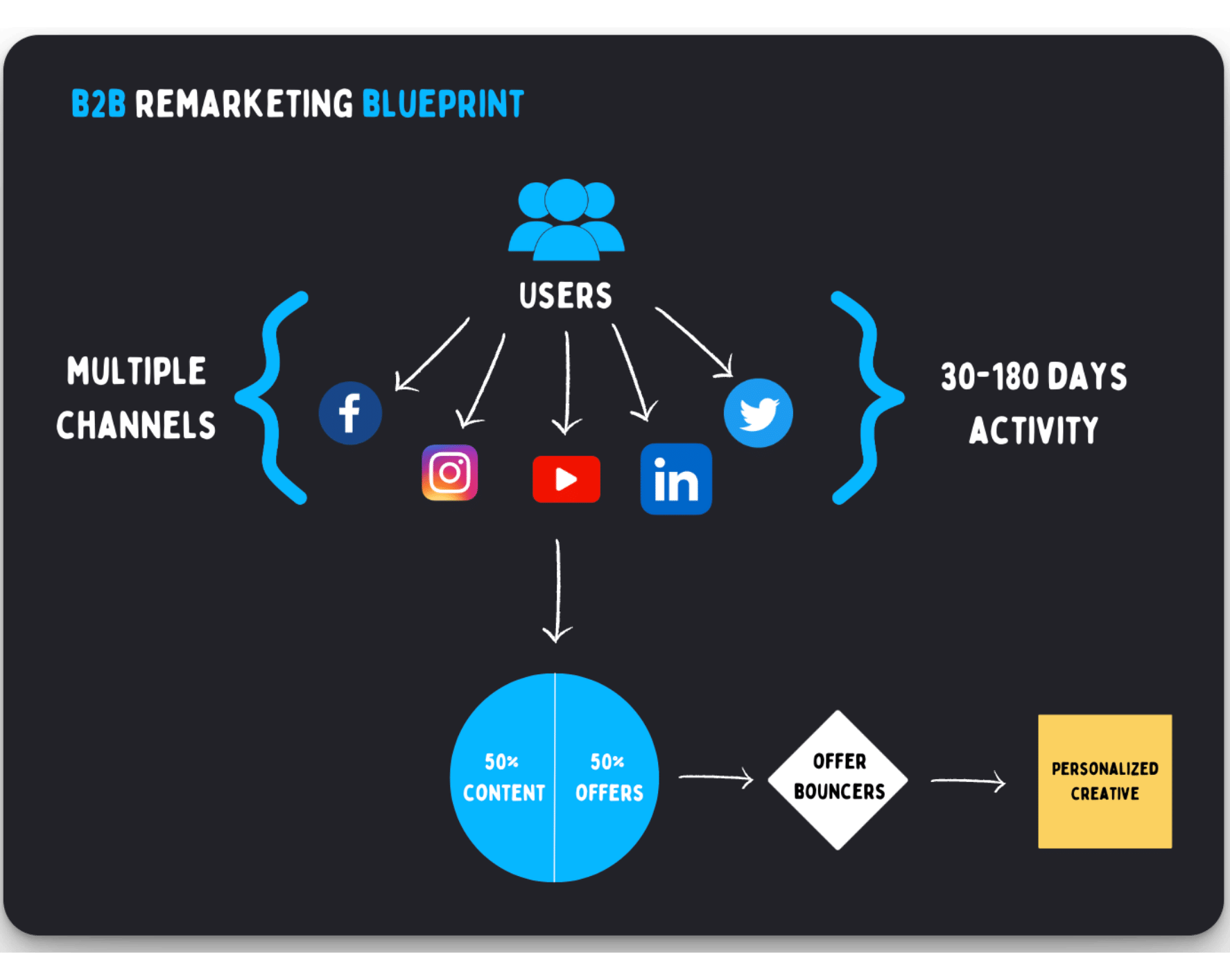
.png)
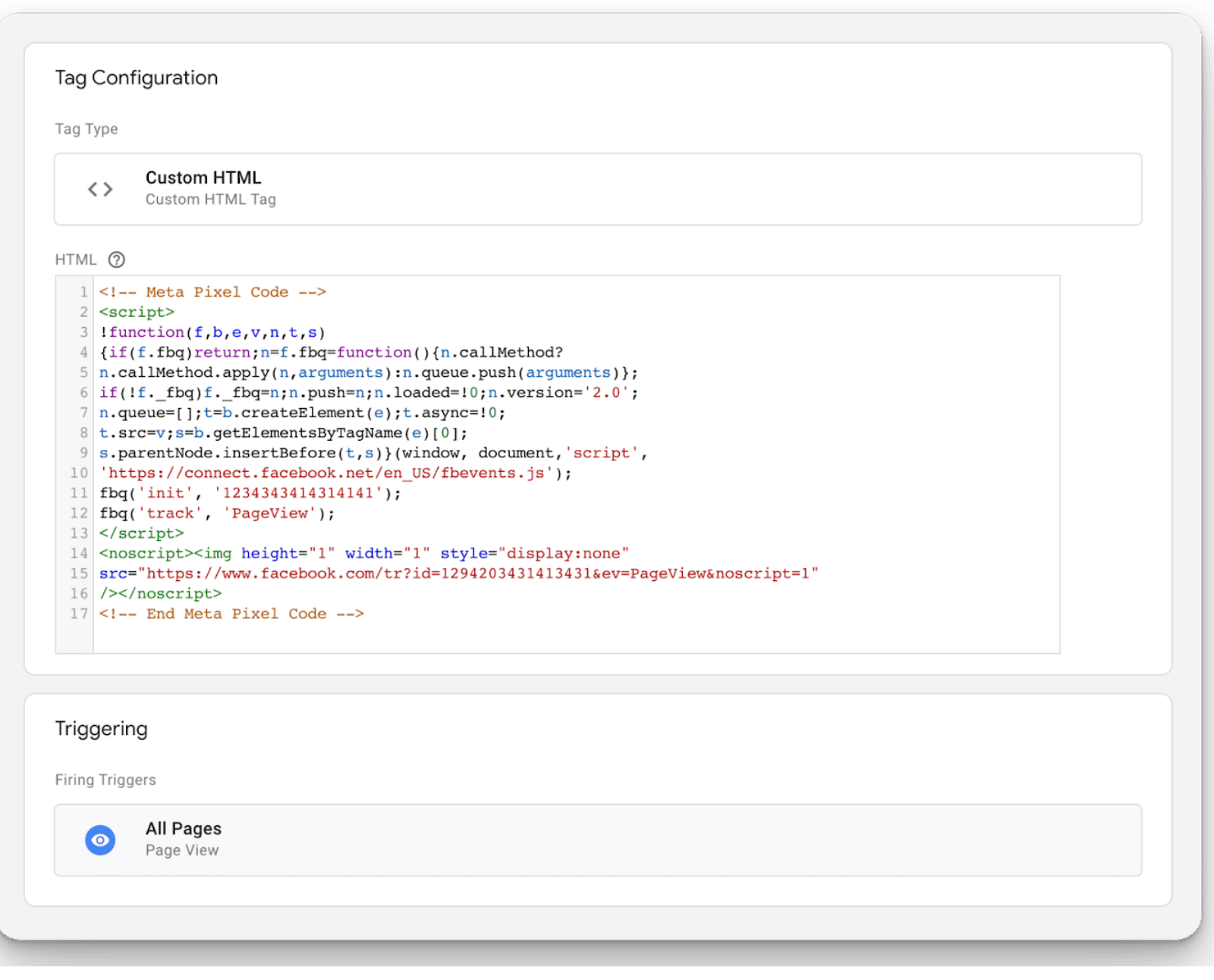


.png)

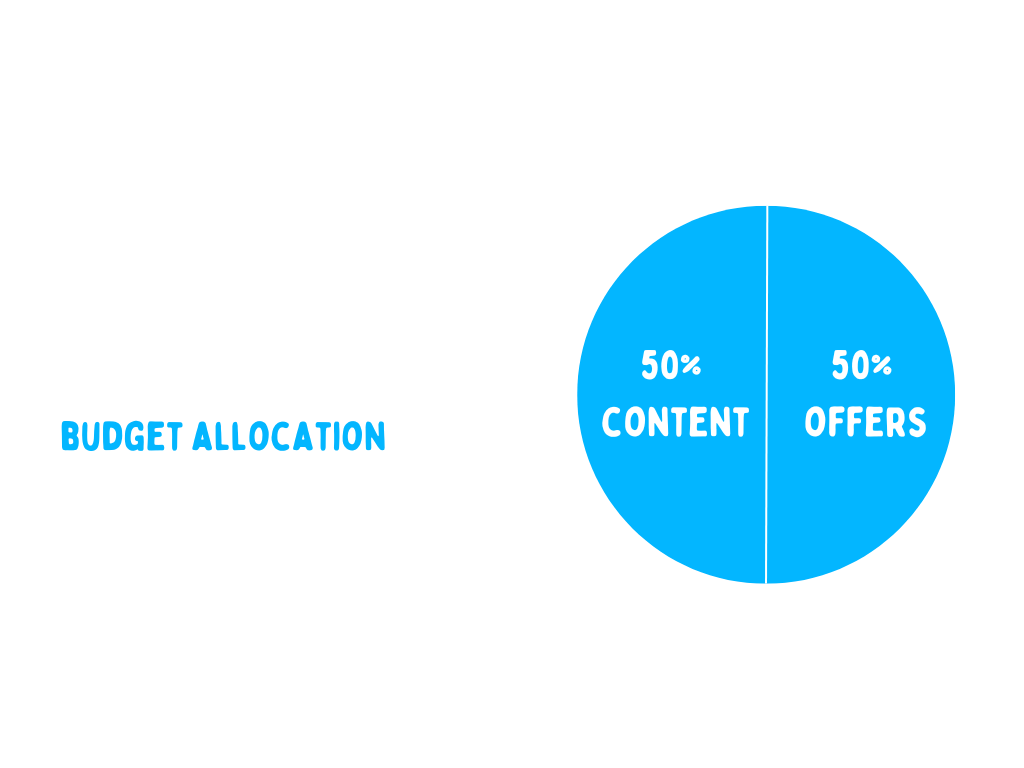
.png)

.png)
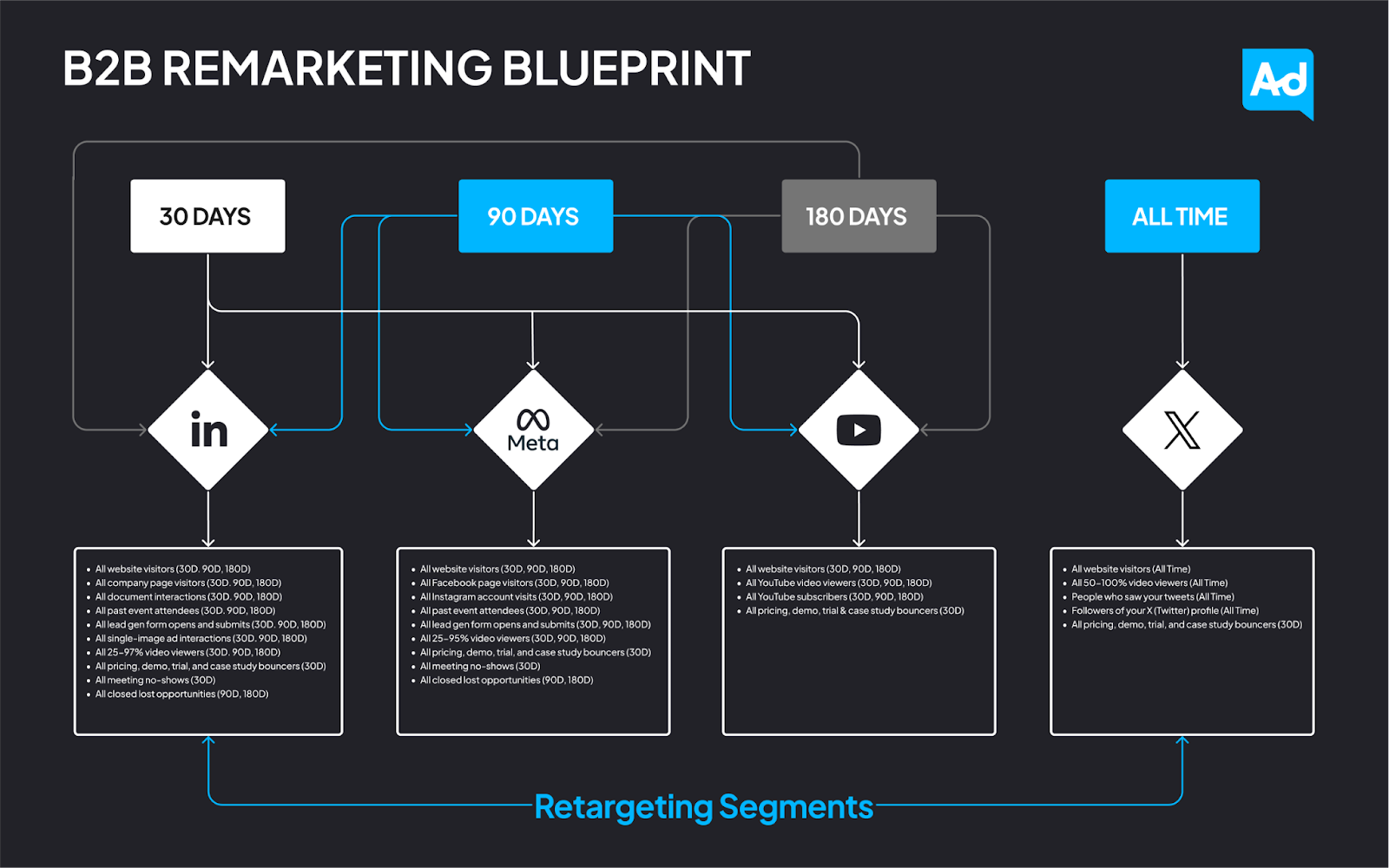


.png)
.png)
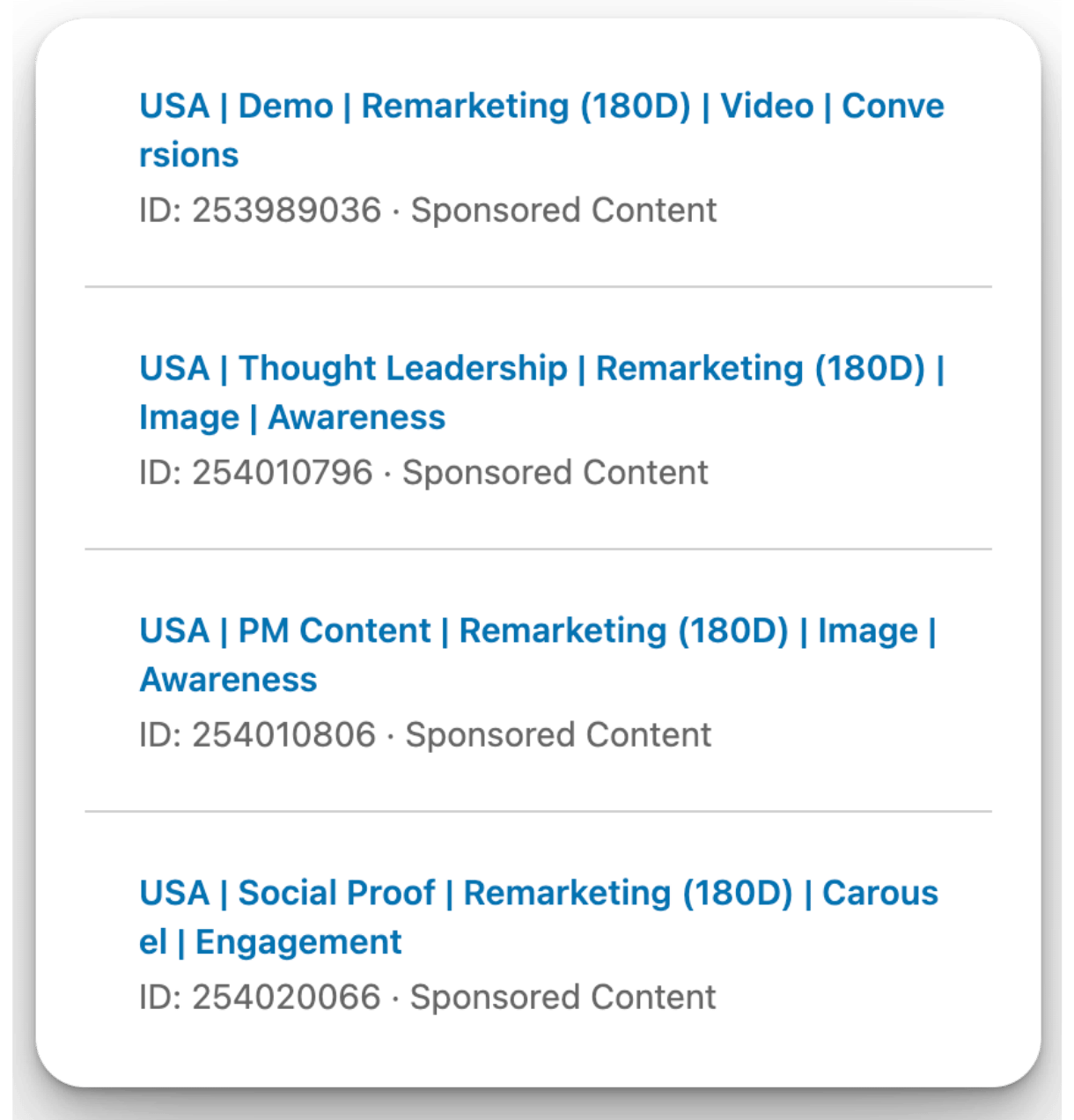
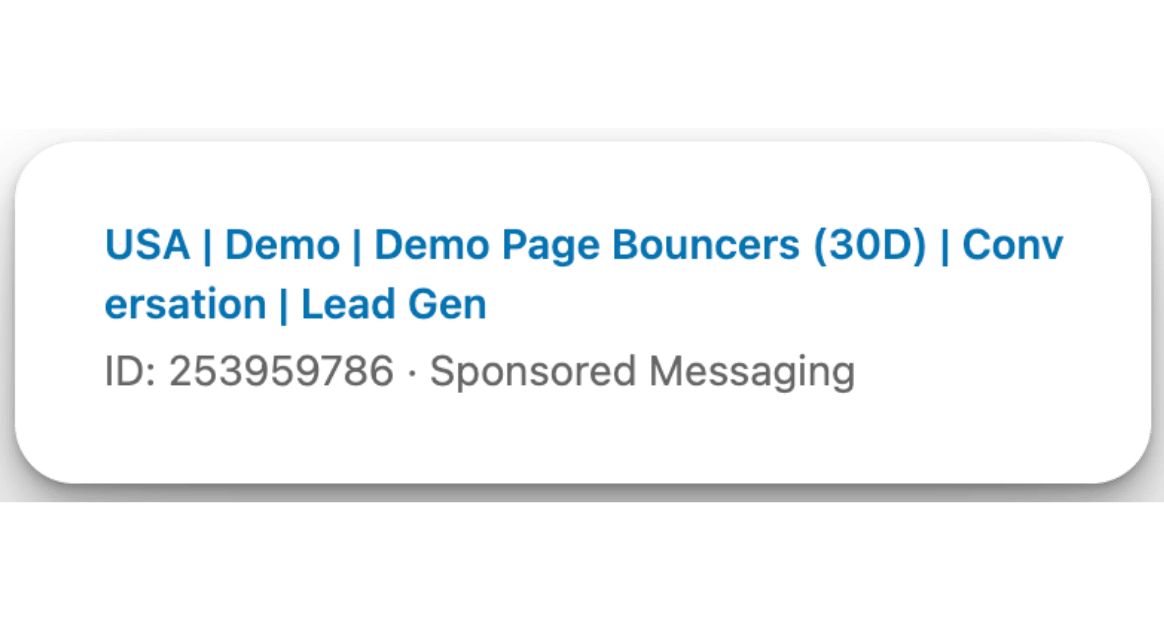
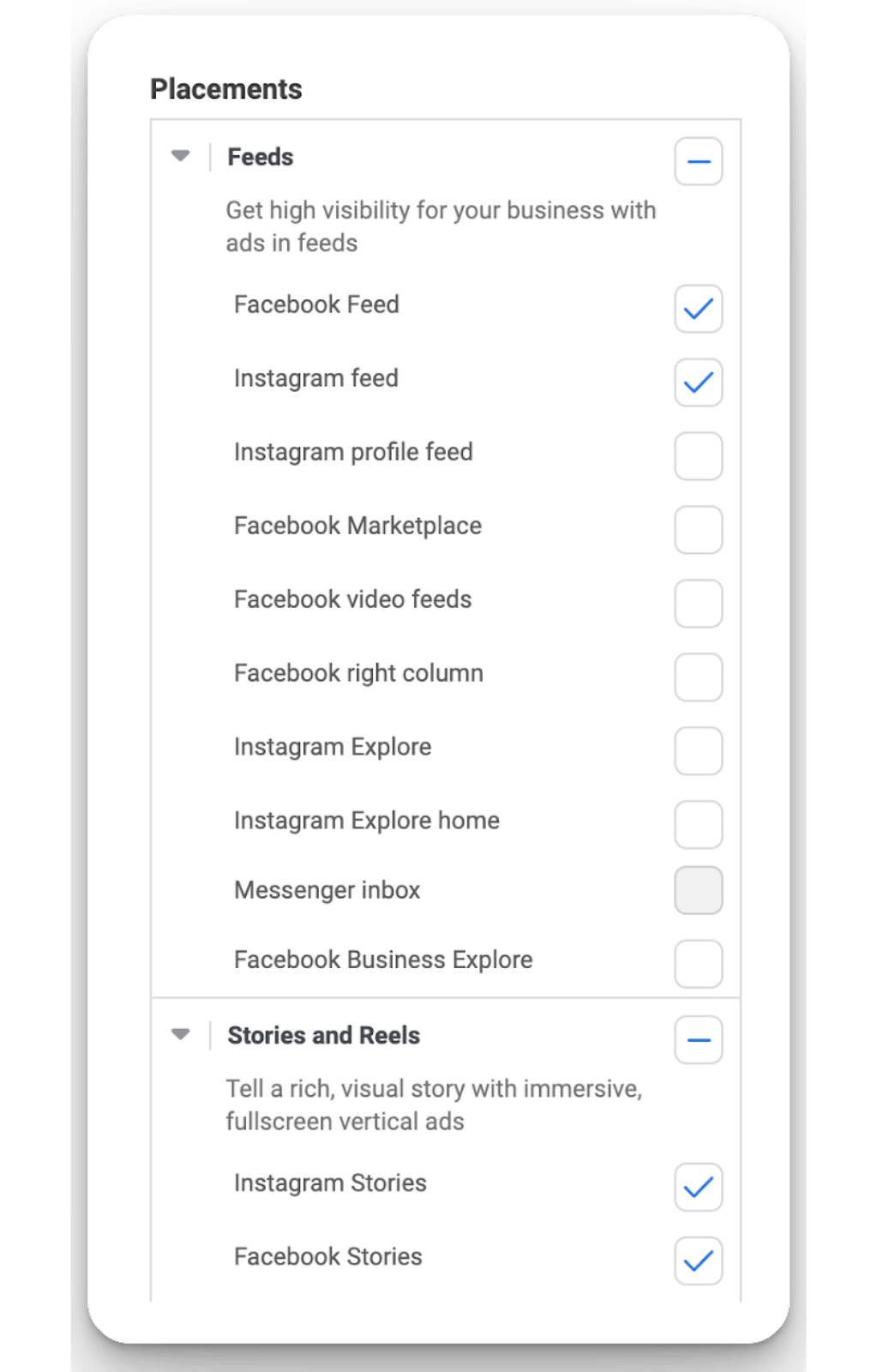

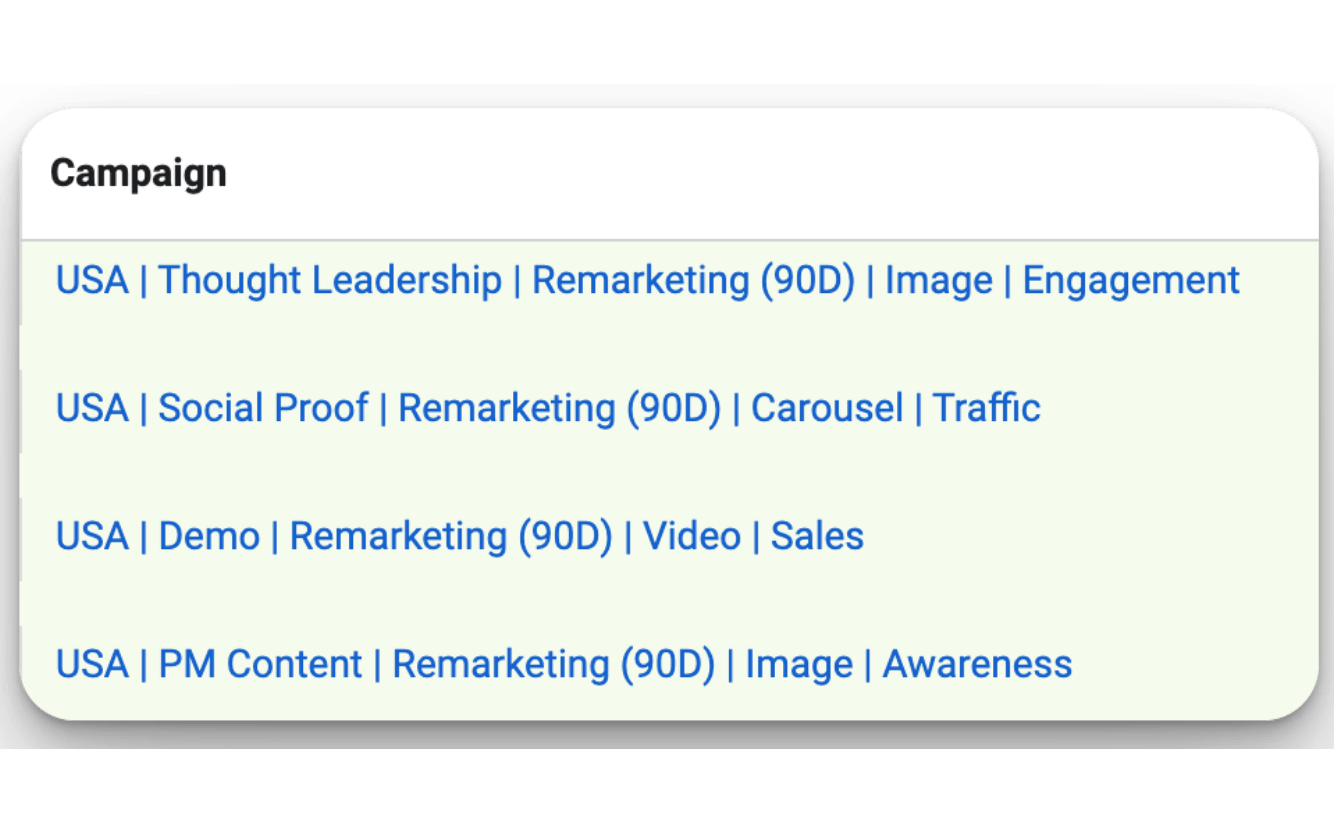

.png)
